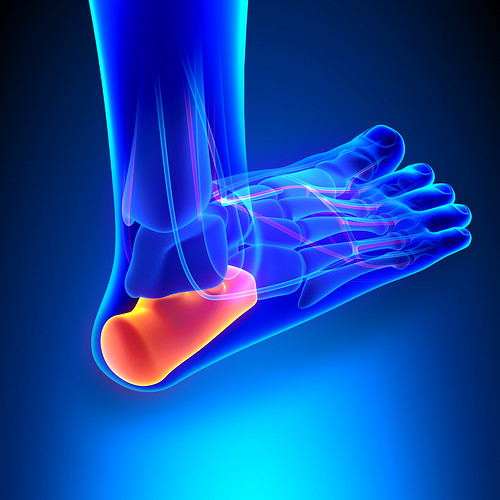
After applying compression bandage the elevation of the affected leg and rest is useful for a speedy recovery. Your foot doctor can help to identify your symptoms and develop a treatment plan.

The treatment options and healing times for cuboid syndrome vary depending on how quickly it is diagnosed treated the severity of the dislocation and also on the complications from any additional injuries.
Cuboid syndrome recovery time. Full recovery from cuboid syndrome can take four to eight weeks if its caused by an ankle sprain or other major injury. To ensure a quick recovery. See a physical therapist if your doctor.
The length of time it typically takes to recover from an episode of cuboid syndrome depends on many factors including. How long the individual has had the injury. Other risk factors include obesity midtarsal instability ill-fitting footwear physical exercise physical training carried out on uneven surfaces and not providing adequate.
When Cuboid syndrome is appropriately identified it is easily treatable and recovery is relatively quick. Your foot doctor can help to identify your symptoms and develop a treatment plan. Treatment for Cuboid Syndrome.
The first step for the treatment of Cuboid syndrome is rest. Reduce activities that put weight on your foot and keep it elevated. Each situation is unique and the recovery time will depend on the individual case.
The length of time recovery will take can vary between a few days to several months. This depends on many factors including. The duration of the injury Did it just start or has it been happening for a while.
Exercises for cuboid syndrome should be started as soon as possible gradually progressed as symptoms allow and continued until full function of the foot is restored. The quicker treatment commences following a cuboid subluxation the quicker full function will be restored. Cuboid syndrome is a condition caused by an injury to the joint and ligaments surrounding the cuboid bone.
Cuboid syndrome causes pain on the lateral side of the foot which is the side of the little toe. A person often feels pain around the middle of the foot or at the base of the fourth and fifth toes. Risk factors for cuboid syndrome include.
Wearing poorly-fitted or poorly-made shoes or orthotics. Performing extreme or extended exercises. Allowing insufficient recovery time after exercise.
Conducting physical training on uneven surfaces. Wearing high heels or rigid heels. Full recovery from cuboid syndrome can take four to eight weeks if its caused by an ankle sprain or other major injury.
To ensure a quick recovery. See a physical therapist if your doctor. A cuboid fracture can be sometimes be misdiagnosed as an ankle sprain.
The time required to recover from a cuboid syndrome episode is based on several factors the common among them are. For how long the person has been injured. Whether it has induced or evolved due to an acute injury.
If another injury has spread and resulted in cuboid syndrome. Strain-based cuboid syndrome usually develops over time with symptoms varying and gradually increasing in intensity. Flat Feet This isnt a unique cause per se but having flat feet is a major contributing factor in the development of cuboid syndrome.
There are two forms of therapy for the treatment of cuboid syndrome the cuboid whip and the cuboid squeeze. This movement is often done while the patient is lying down on their stomach. The patients leg is held in a 70 to 90 degree angle at the knee while the ankle is kept in line with the lower leg and the foot.
Treatment for cuboid syndrome. Most patients with cuboid syndrome heal with appropriate physiotherapy. Treatment usually comprises of manipulation of the cuboid bone to reverse the subluxation.
This is often followed by protective padding and taping to. Cuboid Syndrome Self Treatment Cuboid Bone. Outside of Foot Pain Weve got you covered for your lateral foot pain treatment and outside of the foot pain treatment.
Studies show cuboid syndrome and cuboid subluxation can effect 5 of all athletes and be a problem in 40 of ankle sprains. The treatment options and healing times for cuboid syndrome vary depending on how quickly it is diagnosed treated the severity of the dislocation and also on the complications from any additional injuries. Most cases of cuboid syndrome are reset by manipulating the cuboid bone back into place.
Evidence-based guidelines regarding cuboid syndrome are lacking. Consequently the diagnosis of cuboid syndrome is often based on a constellation of signs and symptoms and a high index of suspicion. Keep it for 5 to 6 minutes at a time then remove and repeat for three times a day.
Compression bandage can be used to minimize movement of the foot. After applying compression bandage the elevation of the affected leg and rest is useful for a speedy recovery. Cuboid Syndrome Taping Padding.
When not putting weight on the foot a person can usually move the foot around freely and with little to no pain. Without treatment however the pain during standing and walking can persist for days weeks or longer. Also fortunately invasive surgery is not usually necessary for treatment of cuboid syndrome.
Cuboid syndrome or cuboid subluxation describes a condition that results from subtle injury to the calcaneocuboid joint and ligaments in the vicinity of the cuboid bone one of seven tarsal bones of the human foot. This condition often manifests in the form of lateral foot pain and sometimes general foot weakness. Cuboid syndrome which is relatively common but not well defined or.